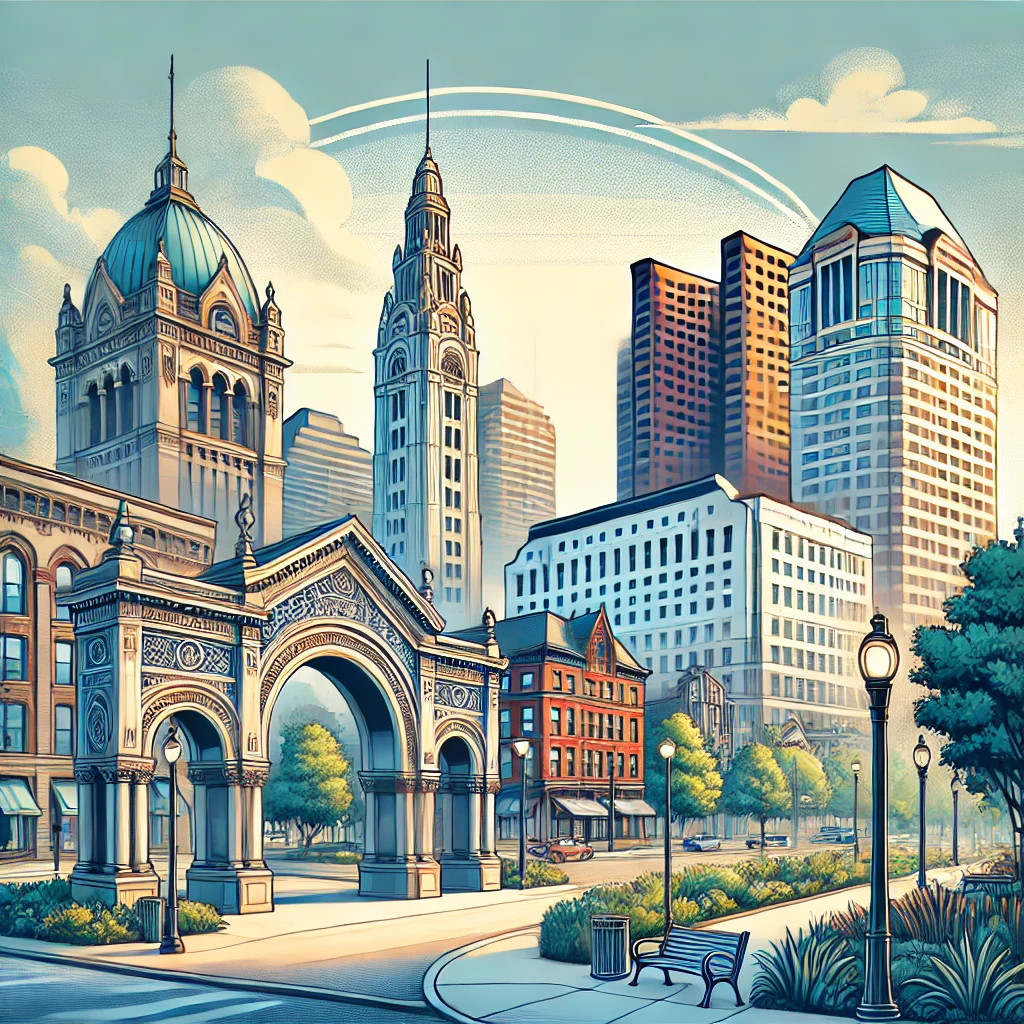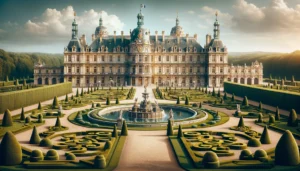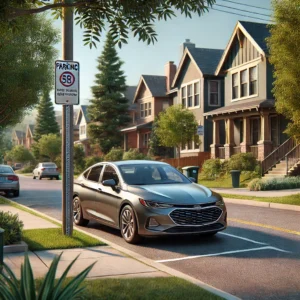Table of Contents
ToggleWhat’s the Story Behind the “Arch City” Nickname?
Ever wondered why Columbus is called “The Arch City”? The story dates back to the late 1800s and early 1900s, when a series of magnificent arches spanned the downtown streets. These weren’t just any arches; they were essential for holding up electric streetcar wires and lighting the way for nighttime travelers. The arches became iconic, symbolizing the city’s technological advancements and community spirit. Although they were removed in the 1910s, their legacy lives on, influencing modern installations and public art that pay homage to this unique aspect of Columbus’s history.
What Can We Learn from Columbus’s Mix of Historic and Modern Architecture?
Columbus’s architecture tells a story of evolution. As you walk through the city, you’ll encounter a blend of historic buildings and cutting-edge modern designs. For example, the Ohio Statehouse stands as a testament to Greek Revival architecture, showcasing stately columns and grand facades. On the flip side, you’ll find futuristic structures like the Wexner Center for the Arts, with its deconstructivist design that challenges traditional architectural norms. This blend of old and new makes Columbus a living museum of architectural styles, reflecting the city’s dynamic and forward-thinking nature.
Which Buildings and Monuments Should You Not Miss in Columbus?
What are the must-see architectural landmarks in Columbus? Start with the Ohio Statehouse, a beacon of history and politics. Then, visit the LeVeque Tower, a striking art deco skyscraper that once held the title of the tallest building in Columbus. Don’t miss the Greater Columbus Convention Center, with its eye-catching, colorful façade and expansive interior. Each of these buildings tells a different part of the city’s story, from government and commerce to art and innovation.
How Do Columbus’s Skyscrapers Shape the City’s Skyline?
How do Columbus’s skyscrapers contribute to its unique skyline? The city is home to several impressive high-rises that define its urban character. The LeVeque Tower, with its distinctive architecture, is a prime example, offering a blend of historical charm and modern utility. The Rhodes State Office Tower and the more recent additions, like the Miranova Condominium Tower, add to the city’s vertical landscape. These skyscrapers are not just office spaces or residences; they are symbols of Columbus’s growth and ambition.
What Makes Columbus’s Architecture Worth Exploring?
Why should you explore Columbus’s architecture? The city offers a rich tapestry of styles and stories, from the remnants of its “Arch City” days to the cutting-edge designs that signal its future. Whether you’re a history buff, an architecture enthusiast, or just curious about the city, there’s something captivating in every corner. Columbus’s buildings are more than just structures; they are narratives of innovation, resilience, and community.
Columbus, Ohio, is a city that wears its history proudly while constantly looking ahead. Its nickname, “The Arch City,” is just one piece of a larger puzzle that makes this city’s architecture so compelling. As you explore its streets, you’ll find that each building and monument has a story to tell, reflecting the city’s unique blend of tradition and innovation. So, whether you’re a local or a visitor, take the time to look up and around—you never know what architectural gem you might discover next.
FAQ: Columbus, Ohio – “The Arch City” and Its Architecture
1. Why is Columbus called “The Arch City”?
Columbus earned the nickname “The Arch City” due to the metal arches that once spanned downtown streets in the late 1800s and early 1900s, originally installed to support streetcar wires and provide lighting.
2. What happened to the original arches?
The original arches were removed in the 1910s as infrastructure modernized, but their legacy continues with decorative arches in the Short North Arts District.
3. What are some must-see historic buildings in Columbus?
Notable historic buildings include the Ohio Statehouse, the LeVeque Tower, and the Franklin Park Conservatory. These sites offer a glimpse into the city’s architectural past.
4. How does modern architecture in Columbus stand out?
Columbus features a mix of styles, with modern architecture seen in buildings like the Wexner Center for the Arts and the Greater Columbus Convention Center, which offer innovative and contemporary designs.
5. Are there tours available to explore the city’s architecture?
Yes, Columbus offers both guided and self-guided tours, allowing visitors to explore its architectural heritage and modern developments.
6. What role do the new arches play in the Short North Arts District?
The new arches in the Short North Arts District are decorative, featuring LED lights that enhance the area’s nightlife and artistic vibe, paying tribute to the original arches.
7. What impact does architecture have on Columbus’s identity?
Columbus’s architecture, ranging from historic landmarks to modern structures, reflects its cultural heritage and dynamic growth, shaping the city’s unique identity.




